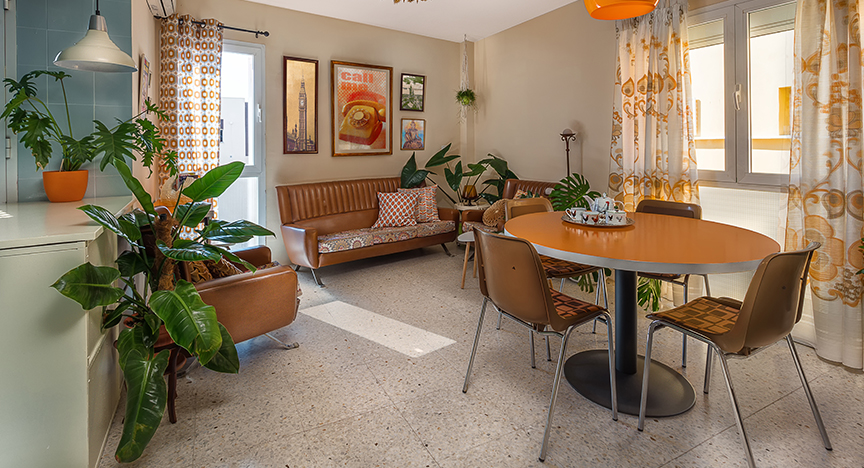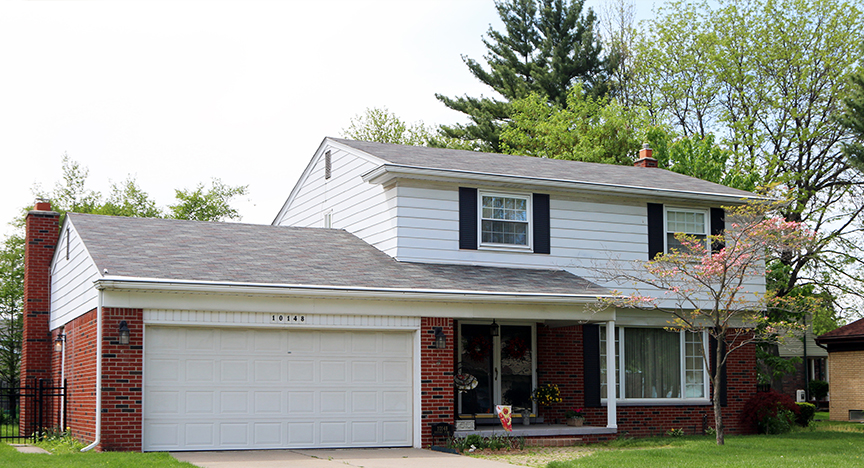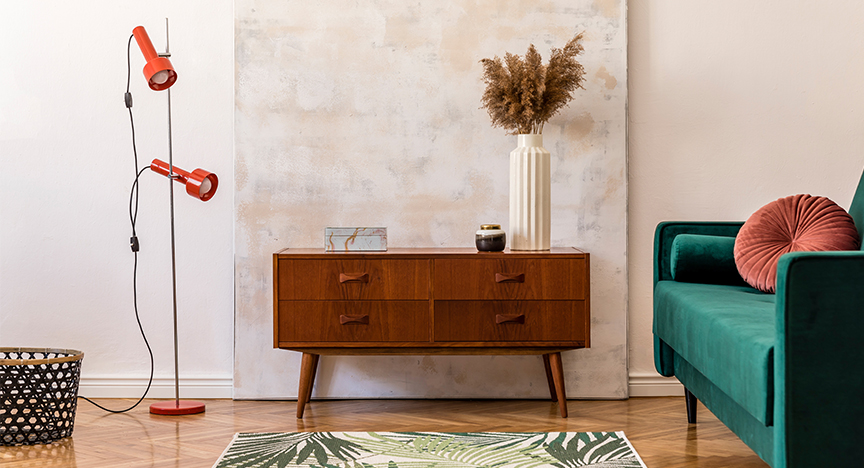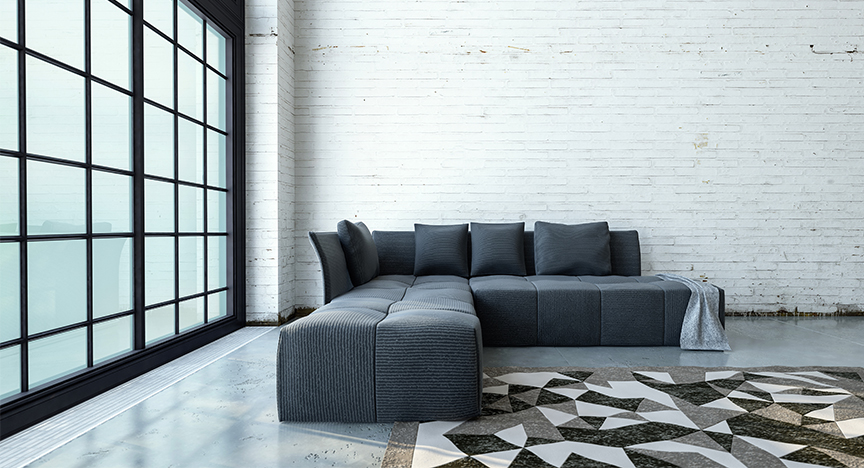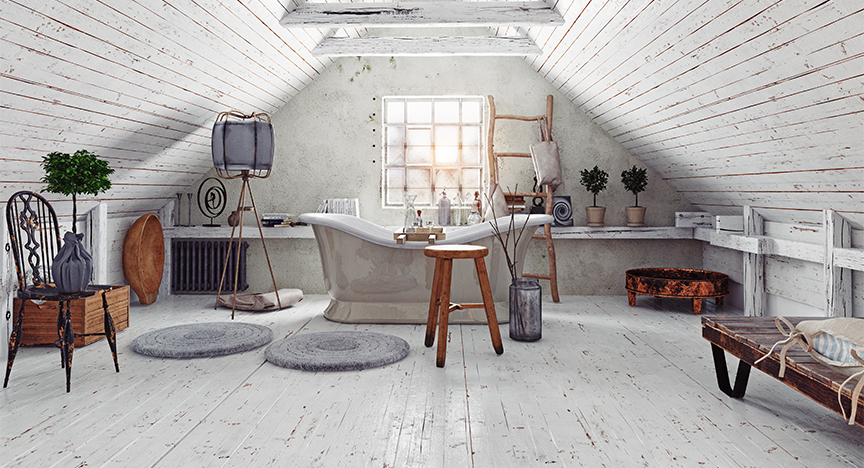This decade was a mixture of triumphant and trying times which the interior design trends of homes demonstrated perfectly. There wasn’t a clear-cut style that was most popular during the 1970s. Households were still enjoying the bold colours and Retro patterns introduced in the fifties and sixties, with many home decors becoming rather partial to wallpapered ceilings, floral motifs, and shag carpeting.
The hippie movement also infiltrated our design styles in the seventies with a greater emphasis on environmentally friendly furnishings using natural or upcycled materials. This saw a new Back to Nature trend gradually transform bright, neon colour schemes into more earthy tones like mustard yellow, burnt orange, avocado green and terracotta red. Greenery like spider plants, hanging vines and Swiss Cheese plants were also popular additions to soften rooms. Wooden furnishings and countertops made a comeback, with rattan furniture replacing the metal and plastic frames from the sixties to provide a more easy-going, natural feel. This was the groovy vibe that dominated the decade.
Influences of individualism
Fashion springs to mind when you picture life in the seventies: perms, platform shoes, tie-dye and flared trousers. Inspired by hippie fashion and the flashy disco wear worn to nightclubs, this era was all about expression and empowerment. New synthetic fabrics meant that fashion styles could now be offered at any price point, making it accessible to the masses and seventies fashion became recognised as the Polyester Decade.
The music scene influenced the fashion of British people with its Glam Rock styles from new artists like David Bowie and Elton John. Fashion also saw Punk-inspired styles from British bands like The Sex Pistols and The Clash. These outlandish attires ranged from sequins, platform boots and colourful nail varnish, to Mohicans, bondage clothes, safety pins and piercings - the unconventional became conventional.
Triumphant times
This decade saw some of the biggest shifts towards creating a modern Britain. Inventions like the cellular phone, barcodes, genetic engineering, laser printing, MRI scanners and microprocessors were among some of the breakthroughs we benefit from today, along with the digital watch and even email. The U.S. successfully landed Viking 1, an unmanned space probe on the surface of Mars, resulting in hundreds of images of the planet's surface being shared for the first time all over the world.
The manufacturing industry was also full steam ahead (or not so much of the steam these days). Robotics, partial automation, computers and memory-programmable controls were forging the start of the 3rd Industrial Revolution. Entire production processes could be performed without human assistance, so assembly lines got faster and so did the delivery times of products.
The transport industry was also prospering. Most people owned at least one car by the 1970s and the iconic chopper bike, manufactured by the Raleigh Bicycle Company in Nottingham was all the rage for children up and down the UK. Holidaying abroad was also growing in popularity as air travel had become more affordable for families. Concorde came into service in 1976, making it the fastest passenger aeroplane in the world, a significant achievement for France and Britain.
In 1979, Margret Thatcher became Britain's first-ever woman Prime Minister and the first woman to govern a western democracy, a huge political statement to foreign countries and a celebrated moment for the British people. Prime Minister Thatcher offered the people of the UK something different and understood how much Britain had transformed over the decade.
Trying times
Unfortunately, for Thatcher, she inherited a poor, failing economy. Despite the laid-back nature of the UK’s fashion style and interior design, the seventies were difficult years for the country both politically and economically. People remained affluent post-war, but foreign competitors had caught up with Britain's once-booming industries.
The British government was mindful of the state’s industries, making a conscious effort to promote British exports through new policies. They also wanted to keep the job market resilient, so there was strong representation from trade unions throughout the decade and good protection was provided for workers, however, as a result, wage increases were modest.
Unfortunately, these efforts were not enough to keep a stable and happy economy. The combination of an energy crisis due to rocketing oil prices, a financial crash and a second miners' strike in two years saw inflation rise by around 24% in the mid-seventies. A three-day week was introduced to save on electricity and businesses started to make mass redundancies. For those who stayed in employment, wages stayed still resulting in more national strikes from core industries from dustbin workers, the postal service, nurses and many more. The streets were littered, the people’s trust in the government was low and in 1979 it was coined the Winter of Discontent.
An eclectic era
Times were no doubt tough for many people in the seventies, but bold changes happened, and the majority of families were, in fact, better off financially than they had ever been. By the end of the decade, homes were one of the only places that provided comfort and joy for families and friends. The Back to Nature interior design trend offered British households a place to express their styles and beliefs, be it politically, environmentally, socially, or ethically.

